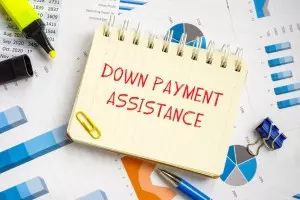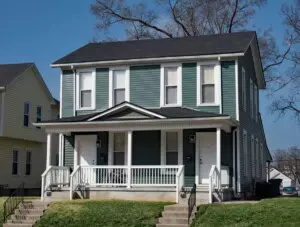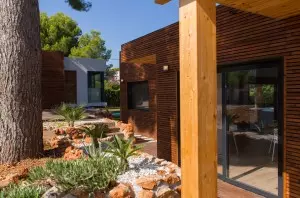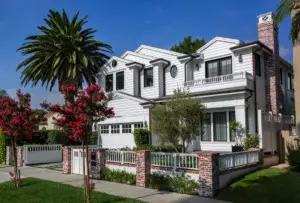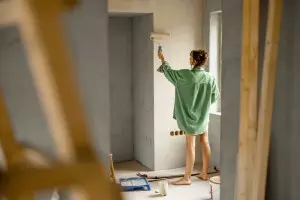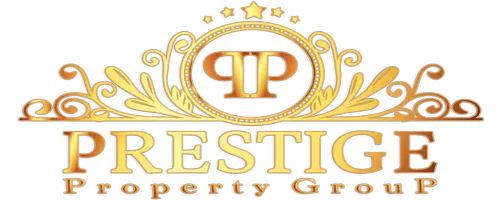Average Home Appreciation Per Year: What You Need to Know

For many, a home represents not just a dwelling, but a significant long-term investment. A key aspect of this investment is understanding “average home appreciation per year,” a metric that reflects how a property’s value tends to increase over time. While national averages in the United States often fall within the 3% to 5% range annually, this figure is a broad generalization.
The reality is that home appreciation is a complex interplay of numerous factors, including local market dynamics, economic conditions, interest rates, property characteristics, and even specific neighborhood developments, all of which can lead to considerable variations in how much a home truly gains in value each year. Let’s explore this topic a little more, whether you are in a condo in Atlanta, a farm-style home in North Dakota, or a stylish flat in Arizona. This Redfin guide will help you understand the factors that influence how much your home’s value can grow.
What is the average home appreciation per year?
Here’s a shorter expansion focusing on the key reasons for fluctuation:
The 4.27% average annual home appreciation in the U.S. from 1967 to 2024 offers a historical benchmark, but it’s crucial to understand that real estate value isn’t a fixed rate. This figure can significantly fluctuate due to several key factors.
Why home appreciation isn’t static
Firstly, market conditions, driven by the delicate balance of supply and demand, play a massive role. When more people want to buy homes than are available, prices rise quickly. Conversely, an oversupply can stall appreciation or even lead to declines.
Secondly, broader economic factors like interest rates are critical. Lower mortgage rates make buying more affordable, boosting demand and thus home values. Economic health, employment rates, and even inflation also influence how much homes appreciate.
Lastly, location and property type are key. A home’s value is heavily influenced by its specific neighborhood’s desirability, local job growth, and amenities. Even within the same area, a newly renovated property will likely appreciate differently than an older one needing repairs. This means a condo in a booming city, a rural farmhouse, or a charming suburban home can all see vastly different appreciation rates depending on their unique circumstances.
Factors affecting home appreciation:
Current state of the U.S. housing market and its impact on appreciation
According to Redfin’s April 2025 data, the U.S. housing market saw a median home price of $437,864, reflecting a 1.3% increase compared to last year. However, the number of homes sold decreased by 2.9% year-over-year, with 442,308 homes sold this April compared to 455,480 in April 2024. Meanwhile, the national average 30-year fixed mortgage rate stood at 6.7%, a slight drop of 0.27 points from the previous year.
In simple terms, when it comes to home appreciation:
- Home prices are still going up, but slowly: The median home price rose by 1.3% compared to last year. This means homes are still gaining value, but not as quickly as they might have in previous years.
- Fewer homes are being sold: The number of homes sold dropped by 2.9% compared to last year. This suggests there are fewer buyers in the market, or perhaps fewer homes being listed, leading to less activity.
- Mortgage rates are slightly lower: The average 30-year fixed mortgage rate is 6.7%, which is a bit lower than last year. This can make homes slightly more affordable for buyers, potentially helping to stabilize demand.
In short, for home appreciation, while prices are still increasing, the market is cooling down a bit with fewer sales, possibly helped by slightly lower mortgage rates. This indicates a more modest appreciation environment compared to very hot markets.
Interest rates and economic conditions
Interest rates and economic conditions greatly influence real estate appreciation. Low rates increase buyer demand and prices, boosting appreciation. High rates reduce affordability and slow or dip appreciation. Strong economies fuel demand and appreciation, while downturns hinder it.
Property type
Property type greatly affects appreciation. Single-family homes often appreciate strongly due to long-term value and privacy, particularly in suburbs. Condos/townhouses have varying patterns based on urban development and fees. Luxury homes see significant gains but are more niche and sensitive to economic shifts. Even within types, specifics like style and size impact appreciation rates.
Maintenance and home improvements
Regular maintenance prevents deterioration and preserves home value, while strategic improvements boost market appeal and increase selling prices, both leading to greater real estate appreciation. Owners can actively “force” appreciation through these actions rather than solely relying on market trends.
How to add value to your home?
- Strategic renovations: Focus on high-impact areas like kitchens and bathrooms. Consider finishing basements or attics to add living space, or building additions if feasible.
- Boost curb appeal: Improve your home’s exterior with landscaping, fresh paint/siding, and updated front/garage doors for a strong first impression.
- Enhance energy efficiency: Upgrade windows, insulation, and HVAC systems to lower utility costs and increase appeal.
- Modernize features: Install smart home technology or update fixtures to create a more contemporary feel.
- Increase functionality: Add a bathroom, create a dedicated home office, or develop outdoor living spaces like decks or patios.
How to prevent depreciation in your home
- Regular maintenance: Crucial for preserving value. Inspect and repair roofs, service HVAC systems, clean gutters, and address plumbing/electrical issues promptly.
- Address issues quickly: Don’t let problems fester. Fix leaks, repair cracks, and replace worn components before they cause significant damage.
- Keep it clean & tidy: Regular cleaning and decluttering maintain a fresh and inviting appearance.
- Avoid over-personalization: Stick to neutral decor and paint colors that appeal to a broad audience for resale value.
- Protect structural integrity: Monitor your foundation and ensure proper drainage to prevent costly structural problems.
Frequently asked questions
Here’s what other people have been asking about the average home appreciation price per year. Take a look.
How do you calculate house appreciation?
The simplest way to calculate house appreciation (as a percentage) is:
- Find the change in value: Subtract the original purchase price (or a previous value) from the current market value.
- Divide by the original value: Take the change in value and divide it by the original purchase price (or previous value).
- Multiply by 100: Multiply the result by 100 to express it as a percentage.
Formula: Appreciation Percentage=(Original ValueCurrent Value−Original Value)×100
Example: If you bought a house for $300,000 and it’s now worth $350,000: Change in value = $350,000 – $300,000 = $50,000 Appreciation Percentage = ($50,000 / $300,000) * 100 = 16.67%
How much does a house go up in value per year?
On average, homes in the United States have historically appreciated by 3% to 5% annually over long periods. However, this is a national average and can fluctuate significantly year-to-year and by location.
- Long-term averages (e.g., since 1967) often hover around 4.27%.
- More recent periods have seen higher averages. For instance, over the past decade (2014-2024), U.S. home values have risen about 6-7% per year on average, and even higher over the past five years (2019-2024), averaging around 8-9% annually due to a recent surge.
Remember, these are averages. Some years will see much higher gains, while others might see little to no growth, or even declines.
How much will a house appreciate in 10 years?
Predicting future appreciation is challenging, as it depends on many unpredictable factors like economic conditions, interest rates, and local market dynamics. However, based on historical averages:
- Using a conservative historical average of 4-5% annually, a home could appreciate by roughly 48% to 63% over 10 years.
- Example at 4% compounded: A $400,000 home could be worth around $592,096 in 10 years.
- Example at 5% compounded: A $400,000 home could be worth around $651,558 in 10 years.
- If the appreciation rate aligns with the more recent 10-year average of 6-7%, a home could essentially double in value over a decade (100% appreciation).
- Example at 7% compounded: A $400,000 home could be worth around $786,860 in 10 years.
What is a good property appreciation rate?
A “good” property appreciation rate is generally considered to be above the rate of inflation. This ensures that your home’s value is growing in real terms, meaning its purchasing power is increasing.
- Historically, a rate of 3% to 5% per year is often considered a healthy and sustainable appreciation rate in a typical market.
- Rates significantly higher than this (e.g., double-digit annual appreciation) often indicate a “hot” or even “bubbly” market that may not be sustainable long-term.
- Anything below inflation means your home is losing real value, and if it’s negative, your home is depreciating in nominal terms.
Ultimately, what’s “good” also depends on your personal financial goals and the local market context. Consistent, steady appreciation is often preferred over volatile swings.
Final thoughts
As we’ve seen from recent data, even with modest price gains, shifts in sales volume and mortgage rates suggest a market that’s constantly recalibrating. The rapid appreciation of the early 2020s is unlikely to be the norm going forward, but continued, sustainable growth is generally expected.
Ultimately, how much your home’s value goes up comes down to its desirability in your specific market at a given time. A home’s appreciation is calculated based on the fair market value of comparable homes in the neighborhood. By understanding these main factors — market forces, property specifics, and diligent upkeep—you’re empowered to make smart choices that will protect your investment and help your home grow in value over time. To track how much your home appreciates each year, claim your home on Redfin and get an instant home-value estimate online.
The post Average Home Appreciation Per Year: What You Need to Know appeared first on Redfin | Real Estate Tips for Home Buying, Selling & More.
Categories
Recent Posts

